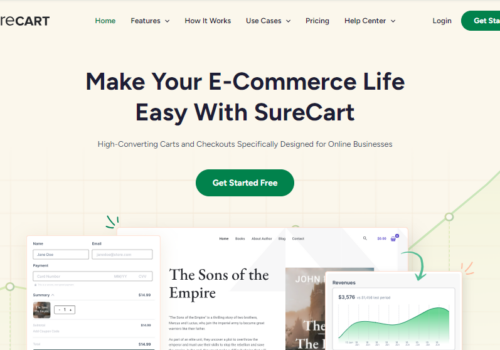What Is WooCommerce
WooCommerce is a popular eCommerce platform that allows you to create an online store and sell products or services. It is free and open-source software that is available for anyone to use.
WooCommerce is built on top of WordPress, which means it inherits all the same features and benefits. You can find plenty of documentation and support for WooCommerce, and it is easy to install on most hosting platforms.
If you’re interested in creating an online storefront for your business or startup, WooCommerce can be a great option! Because it is so popular and widely used, you will have no shortage of resources or support available to help you get started with your store.
Whether you need help installing the software, creating your products or services, or figuring out how to market and promote your store, there are plenty of people who can help.
So if you’re thinking about starting an online business, WooCommerce might be worth considering. Whether you want to sell digital products such as ebooks or physical goods, it is a great option for building your brand and growing your business.
The Reality of WooCommerce Pricing
In many ways, WooCommerce pricing is one of the most important aspects of running an online store. After all, if your products are too expensive – or priced too low – you won’t make as much profit as you need to.
This can be an especially big concern when you consider that there are so many different WooCommerce plugins and themes to choose from. With so much competition, it’s more important than ever that your prices are just right: not too high and not too low. But what does the reality of WooCommerce pricing look like?
The first thing to consider when thinking about WooCommerce pricing is how you’re setting up your store. If you want to be able to offer a wide range of products, you’ll need to make sure that your prices are competitive.
Fortunately, there are plenty of ways to do this: from using discounts and coupons to offering free shipping, there are plenty of ways to make sure that your prices are attractive to potential customers.
Once you’ve got your prices set up, it’s important to remember that they’re not set in stone. If you find that your products are selling well but not at the prices you want, don’t be afraid to adjust them accordingly.
And if you need to raise your prices in order to cover the costs of new inventory or additional shipping charges, that’s perfectly fine, too. The important thing is to keep an eye on your bottom line and make sure that your prices are helping you reach your goals.
Designing Your WooCommerce Website
There are a few key things to keep in mind when designing your WooCommerce website. First, your site should be designed to convert visitors into customers. This means that your design should be focused on helping visitors find what they need and then providing them with a clear path to purchase.
Second, your WooCommerce website should be designed to be user-friendly. This means that your navigation should be easy to understand and use and that your content should be easy to read and digest.
Finally, your WooCommerce website should be designed to be mobile-friendly. More and more people are shopping on their smartphones and tablets, so it’s important that your site is optimized for all devices.
This means you need to choose a responsive theme that adapts your site to smaller screens, and also take steps to ensure that your images, videos, and other media are sized appropriately for mobile devices.
Quick Links:
- Why Sell Your LearnDash Online Courses With WooCommerce
- Definitive Guide To Setup WooCommerce Store (Step By Step)
- List of Best WooCommerce WordPress Themes May Don’t Miss!!
Conclusion: WooCommerce Pricing 2025
The pricing options for WooCommerce are vast and can be a little overwhelming. However, by taking the time to understand your own business and what you want to achieve with your eCommerce store, setting up the correct pricing strategy is simple.






